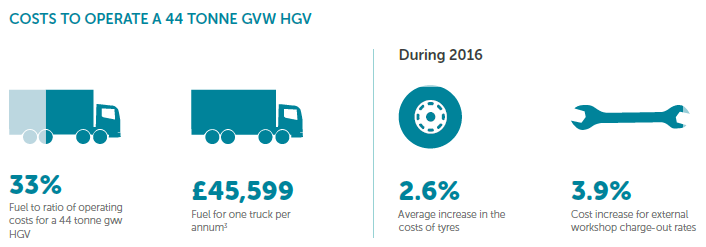Although robotics has been around for some time and has seen a high degree of usage within manufacturing, use of the technology lower down the supply chain has been limited. With the newer breeds of robotics becoming more commonplace however, this has started to change. More advanced robotics are enabling some of the most futuristic-seeming capabilities of the modern supply chain.
Autonomous Vehicles
Recent years have seen significant advances in autonomous vehicles and self-driving capabilities. While the technology still has a way to go before we see wide adoption of it (including overcoming all the regulatory hurdles such a paradigm shift entails), it won’t be long before fully autonomous vehicles are a regular feature of our roads.
Perhaps the first commercial iteration we are likely to see will be semi-autonomous convoys of trucks – a road train, if you will. With a single driver controlling the lead vehicle, each additional truck behind will be linked remotely and follow the example set by the human controller – accelerating, braking, steering all under autonomous control. These convoys will allow businesses to make significant cost savings from reduced labour and increased fuel efficiency, while also contributing to reduced congestion on our road networks.

Source: EEF Executive Survey 2018
Drones in the Air
Inevitably when we talk of drones these days, the mind leaps to images of flying vehicles, from the basic hobbyist’s quadcopter to the military’s advanced UAVs. Drone technology is certainly well beyond its infancy, however we are still yet to see widespread commercial adoption of the technology.
For businesses to view the technology as a viable and profitable solution, drones will need to be operated autonomously in much the same way as self-driving vehicles. Regulation and perfecting the technology to ensure it operates safely are the main hurdles to overcome, but trials are already well underway to overcome these challenges.
Once the technology has matured, its potential to revolutionise the transportation of small goods will be significant. This was recognised by some of the earliest adopters and developers of the technology, who include some of the largest ecommerce giants on the planet.
Drone delivery will drastically reduce transportation costs (labour, fuel, vehicle maintenance, road/toll charges) and environmental impact (CO2 emissions, traffic congestion), while enabling almost instant gratification for consumers with delivery times of 30 minutes or less. It will also enable (and indeed, already has enabled) greater and easier access to remote areas, allowing vital goods such as medical supplies to be delivered to distant communities or disaster-hit areas.
Drones on the Ground
Even though airborne drones are perhaps more prevalent in the public eye, drones on the ground can also offer significant value. Without the regulatory issues facing flying objects, they can also be implemented immediately – indeed many organisations already make use of these types of drones, particularly in warehousing and distribution.
Drones in warehousing are currently used for the movement and basic handling of goods. They typically operate and access the stored goods from either above or underneath, depending on the type. A major benefit of accessing goods in this way is the elimination of walkways between racks, enabling greater utilisation of floor space and optimisation of inventory.
Drones operating from underneath will move around the warehouse floor along designated paths or programmed routes, with sensors for object detection and collision avoidance. To this end, they may also communicate with each other to some extent.
Drones operating from above will move around via a fixed grid of tracks that align with the stock layout beneath. These drones tend to go beyond being simply communicative and become collaborative, effectively replicating a swarm within a hive. They will work together to access select goods buried deep in layers of racking and enable more selective picking than can be achieved with floor-based drones.
At present, these robotic drones are limited in their ability to interact with certain types of sensitive goods such as fresh fruit and vegetables, which are easily susceptible to damage. As such a human element is still required, however with the development of projects such as Ocado’s Second Hands robot, it will not be too long before we have the ability to eliminate that element of human interaction as well.


